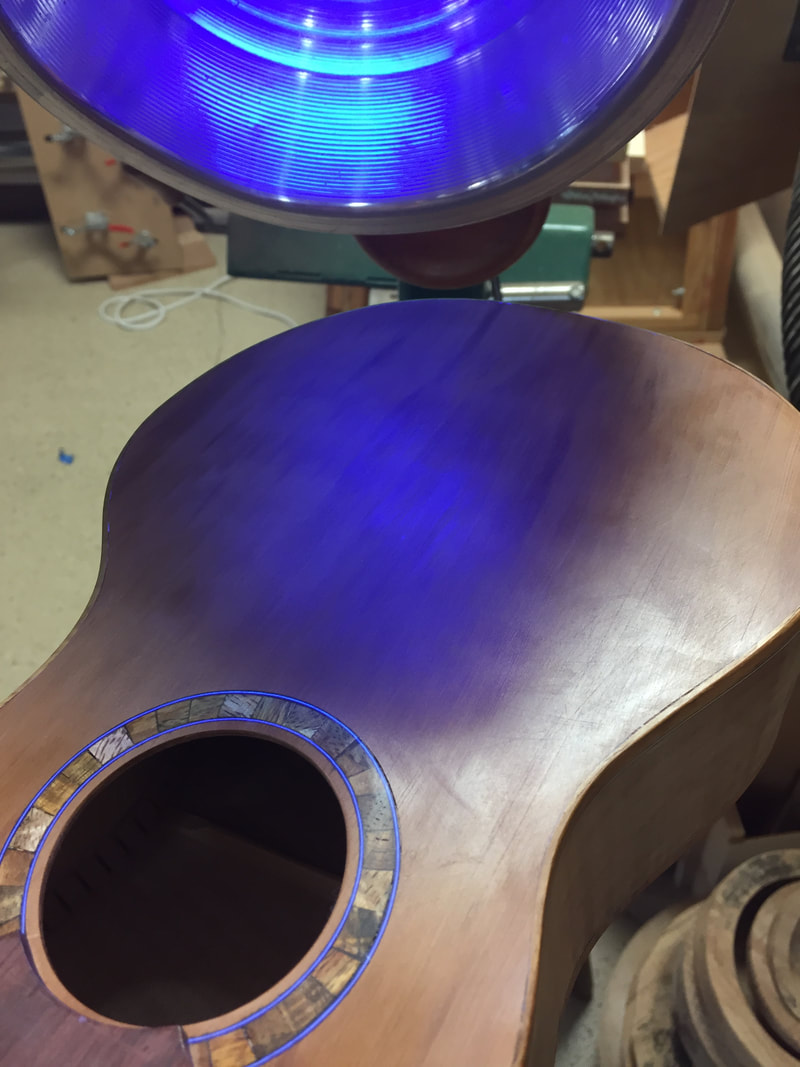It happens every time- When the finishing begins on the last built, I get the itch to start another.
The next project is a Kasha tenor for a local musician. She has chosen a duplicate of my 100th instrument, a Kasha tenor with a Redwood top and East Indian body. The uke has incredible warmth, character and clarity and is currently my personal favorite. I think this copy will be just as good. Today I chose the book matched Redwood top. It is from that trove of New York City water tank Redwood. It has probably been absorbing the minerals of New York water for eighty years. It tap tones with a remarkable hard high ring. I have high expectations that it will make an incredible instrument. So today I glued together the two pieces that will be the soundboard.
You do that by making the edges to be joined perfectly flat. There are a number of ways to do that, but my primitive-but affective way is to sand each edge on the flat surface of my table saw.
Here are the tools that I use to make perfect glue joints for tops and backs of instruments. Really very simple and easy.
And here they are, clamped tightly together with a 25 pound bag of bird shot preventing the tightly clamped top from popping up in the middle.
But now back to the ending of a build, the finish work. When you have sanded and sanded, and finally apply the finish all your careless mistakes and miscues become evident. One of the problems is always glue spills which mess up the finish. I use a glue that has a chemical in it which shows up under black light. So I pass the instrument under a black light bulb and , Oh no, I must do more sanding here and there.
Note the blue color of the purfling around the rosette, The middle picture shows the way it is supposed to look, but the right hand picture shows the glue that will affect the finishing. It must be sanded off. and so it goes. sand and filll-sand agin- and when it is all done and drying you get to see further little inaccuracies of just plain goof-ups.








